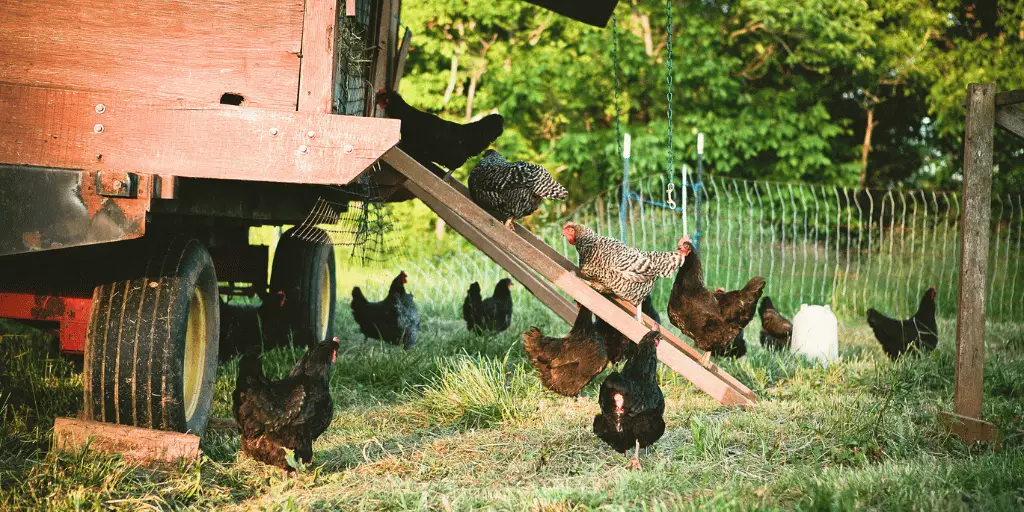Whether you are a new chicken raiser or an experienced one, mistakes in poultry farming are a regular part of the process.
Keeping backyard chickens can be a fun and rewarding hobby, but it also involves a learning process.
You might be dreaming of happy hens roaming the yard and a steady supply of fresh eggs, but chickens aren’t completely self-sufficient – they need your care and planning.
This guide walks you through 11 common mistakes that backyard chicken keepers make and how to fix them.
Think of it as friendly advice from someone who’s been there. By learning these tips now, you’ll avoid headaches later and keep your flock healthier and happier.
Whether you just brought home chicks or have a few pullets laying their first eggs, these insights apply almost anywhere in the world.
We won’t dive into specific local laws or climates, but rather share practical, easy-to-follow guidance that works for most backyard flocks.
Let’s get started on creating a safe and comfortable home for your chickens and providing them with the best care possible.
1. Inadequate Space (Overcrowding Your Flock)
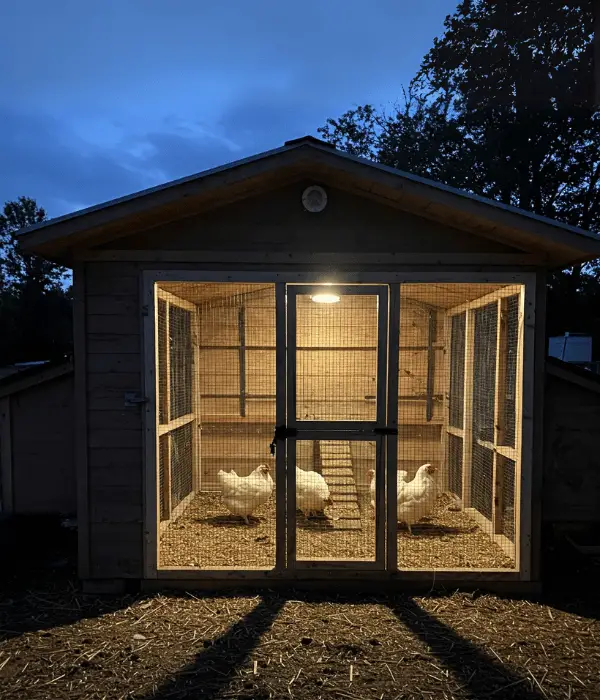
One of the most common mistakes is underestimating the amount of space chickens require. If you keep too many birds in a coop or run that’s too small, they’ll get stressed.
Crowded chickens fight over roosts and peck at each other’s feathers, and the coop fills with ammonia from all the droppings.
Experts recommend roughly 3–4 square feet of coop space per hen and about 8–10 square feet in the outdoor run.
For example: If your coop is labeled for 4 hens, don’t assume you can fit 6 or 8 – “chicken math” will quickly catch up with you.
To fix this, give your birds more space to breathe. First, calculate space carefully: measure your coop and run, and ensure you’re at or above the recommended space per bird.
If you already have too many chickens, consider reducing the flock or expanding the coop and run.
For example, you might:
- Provide at least 4 sq ft per chicken in the coop and 10 sq ft in the run. Adjust these numbers up if your chickens are large breeds.
- Let chickens free-range for part of the day if safe, so they have more ground to wander. Using a chicken tractor (a portable chicken coop) can also rotate them through fresh ground.
- If you plan to add chicks or hens in the future, build extra space now. Building one slightly larger coop will save you headaches later.
- Watch for signs of crowding. Constant squabbling, dirty corners, or even hens staying outside or on trees and roosting on the ground are clues you need more space.
By planning ample room from the start, you’ll keep your hens calmer, cleaner, and more productive.
2. Poor Coop Design (Ventilation & Security)
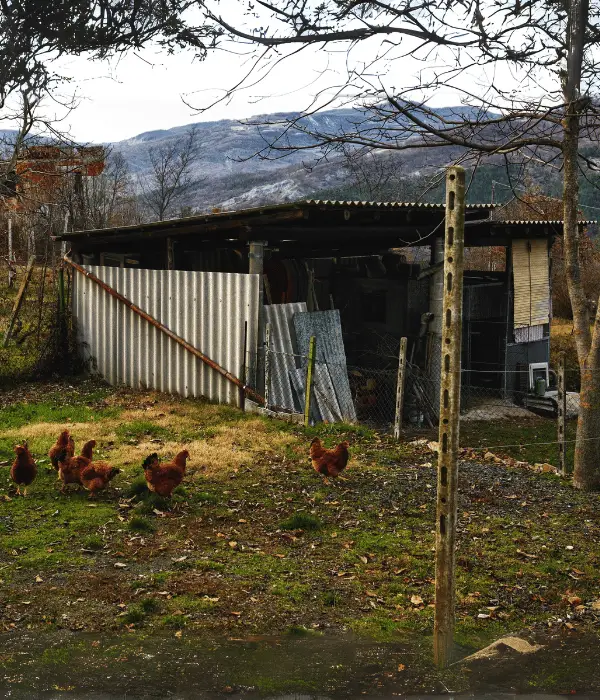
A well-designed coop is crucial. Two big design mistakes to avoid are inadequate ventilation and poor predator-proofing. Both can turn your nice coop into a nightmare for hens.
Ventilation is key. A coop that’s completely sealed up may sound warm, but it traps moisture and ammonia fumes.
In winter, that moisture can drip back onto birds and freeze, causing frostbite on combs and wattles.
Poor airflow in the summer leads to a damp, odorous coop, which fosters respiratory infections and mold growth.
The solution is to install vents high up (near the roof) so humid air can escape, but avoid drafts blowing directly onto the roosting hens. In practice:
- Install vents or windows high up. Let the warm, moisture-laden air rise out of the coop. (Chickens tolerate cool air at floor level better than freezing air on their bodies.)
- Cover any openings with hardware cloth or screening to prevent predators while still allowing air to circulate.
- Seal significant gaps that might blow drafts under roosts. A little cross-breeze is fine, but wind blowing through their feathers is not.
Predators are the other significant hazard. Even in suburban areas, sneaky animals will target chickens if given the chance. Leaving a coop unsecured is practically an invitation.
For example, raccoons can reach through holes or even open simple latches, and foxes or stray dogs can tear open flimsy wire. To fix this:
- Secure every opening. Cover all windows, vents, and run walls with strong metal mesh (such as hardware cloth or welded wire). Do not rely on flimsy chicken wire – predators can rip it.
- Bury a skirt of wire. Bury 12 inches of hardware cloth around the coop’s perimeter so animals can’t dig in from underneath.
- Lock doors and latches. Ensure the coop doors latch securely. (Raccoons are notorious latch-openers.) If possible, use padlocks or spring latches that animals can’t easily manipulate.
- Consider extra deterrents. Some keepers use motion-activated lights, alarms, or even electric netting around the run. These can make predators think twice.
By designing the coop with good airflow and ironclad security, you prevent many problems before they start.
3. Dirty Coop and Parasite Problems

Neglecting regular coop cleaning is a recipe for parasites and disease. A dirty, damp coop is perfect for lice, mites, fleas, and bacteria.
The hen in the photo above suffers from a severe lice infestation – something that often begins in unsanitary conditions.
Chickens that live in dirty coops may start losing feathers, become anemic or itchy, and show restless or scruffy behavior. These critters can easily spread to all birds once introduced.
The fix is to keep it clean and provide preventive measures:
- Clean out bedding often. As a general rule, do a thorough clean at least once a month: remove all bedding, sweep out droppings, and replace with fresh straw or shavings. If you use a deep-litter method, still stir the bedding weekly and dry it out as needed (e.g., add fresh shavings or diatomaceous earth if it starts to smell).
- Disinfect nesting boxes. Every cleaning day, empty the nesting material and scrape or spray the inside of the nest boxes with a safe poultry disinfectant or a diluted bleach solution. Let them dry completely before refilling.
- Offer dust baths. Chickens naturally control external parasites through the process of dust bathing. Provide a permanent dust bath (a shallow box with sand or a sand/wood-ash mix) so they can clean their feathers. Dust baths help suffocate mites and lice.
- Use natural repellents. Sprinkling food-grade Diatomaceous Earth (DE) into roosting areas and bedding can help kill mites and lice by scratching their bodies. A small amount of food-grade DE lightly dusted on hens (avoiding the face and vent) can also help. Wood ash (from clean wood) is another safe dust bath addition.
- Inspect your birds. At least once a week, gently part your hens’ feathers around the vent, under the wings, and on the legs. Look for small, dark specks or moving bugs (mites or lice). Early detection allows you to treat with poultry-safe sprays or powders before it becomes a significant problem.
Regular cleaning and monitoring are the simplest fixes. A clean coop not only prevents parasites but also encourages healthier birds and nicer eggs.
4. Poor Nutrition and Lack of Water
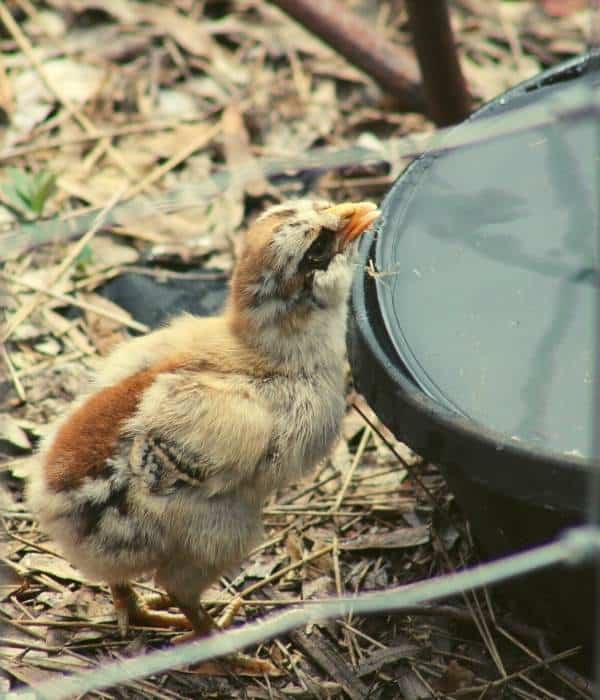
Your chickens are only as healthy as what they eat and drink. A significant mistake is consuming an unbalanced diet or not drinking enough water.
Feeding hens only kitchen scraps or low-quality feed means they miss out on essential vitamins and minerals.
For example, laying hens need extra calcium for strong eggshells, and chicks need higher protein for growth.
In short: invest in a quality, age-appropriate feed. Experts stress: “Nutrition is the cornerstone of healthy chickens”. That means:
- Use commercial chicken feed formulated for the right life stage: starter feed for chicks, grower feed for young pullets, and layer feed (with extra calcium) for egg-laying hens.
- Supplement wisely. Offer clean oyster shells or crushed eggshells as a free-choice option for laying hens to ensure they receive enough calcium. Provide grit (small, insoluble stones) if your hens don’t free-range; they need grit to grind up grains in their gizzards.
- Treats are fine in moderation. Offer safe treats like leafy greens, fruits, or mealworms, but ensure that treats don’t exceed 10% of their diet. Avoid giving random human foods, as some can be toxic to pets. (Did you know avocado, raw potatoes, and chocolate are poisonous to chickens?) Always check online before feeding anything unfamiliar.
- Keep fresh water available at all times. Water is even more critical than food. Ensure your birds always have access to water, especially in hot weather. Use gravity waterers or nipple drinkers to keep water clean. In winter, check the waterer 2–3 times per day and use a heated waterer or bring warm water to the coop each morning to prevent the hens from drinking ice.
By feeding a balanced diet and providing clean water constantly, you’ll see stronger birds and more eggs.
Weak or missing eggs, pale shells, or lethargy often indicate dietary gaps, so adjust the feed accordingly.
5. Overlooking Predators and Security

Predators are a constant threat. Many beginners assume “it won’t happen here,” but foxes, raccoons, hawks, dogs, and even neighborhood cats can attack chickens if given the chance.
The photo above of a wild fox is a reminder: vigilance is key. If you leave your hens exposed by forgetting to lock them up, leaving run gates open, or having holes in the wire, you risk losing birds overnight.
To protect your flock:
- Double-check your coop and run for weak spots. Cover everything (windows, vents, gaps) with sturdy wire mesh. Burrow a 12-inch skirt of hardware cloth around the outside to stop digging predators.
- Lock up at night. Chickens should be safely tucked in their coop before dusk. Every evening, count the birds as you close the coop door. Even one hen left roosting outside can be lost. Raccoons and foxes are most active at night, so a simple latch is not enough – use a solid lock or carabiner.
- Use proper latches and fences. Simple clip locks are easy for a raccoon to undo. Consider spring-loaded locks or padlocks. Reinforce the top of the run: Hawks can reach in, and curious critters can come down from trees or roofs.
- Set traps or deterrents if needed. Some keepers use a live trap to catch persistent predators. Motion-activated lights or a small radio in the coop can deter night hunters. Even something as simple as a low chicken-wire skirt angled outwards can baffle animals digging in.
Don’t leave feed out overnight, either – the smell may draw predators. By assuming that predators will try to get in (because they will!), you’ll stay one step ahead.
Secure everything as tightly as you would to keep your valuables inside: your chickens’ lives may depend on it.
6. Skipping Quarantine and Biosecurity
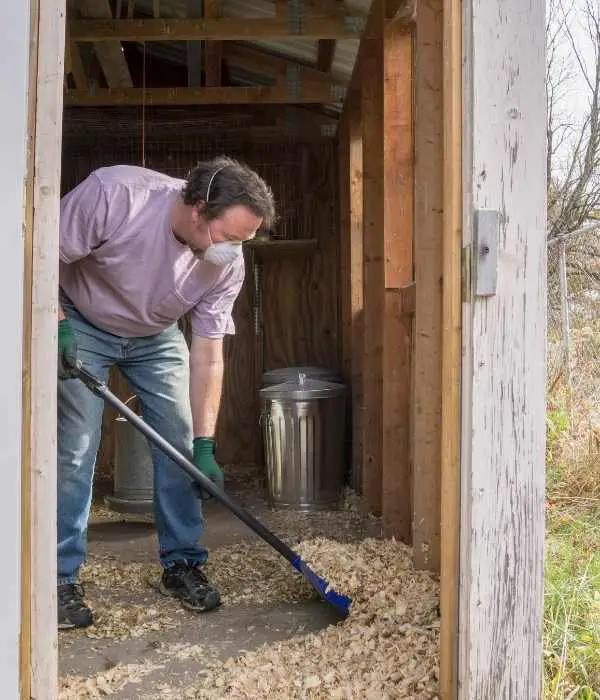
When adding new birds, don’t rush it. One fatal error is introducing chicks or hens into the flock without isolation.
Even healthy-looking birds can carry diseases (parasites, viruses, etc.) that spread to your whole flock.
Veterinarians and experienced keepers strongly advise quarantining new arrivals for at least 2–4 weeks.
Here’s how to do it right:
- Set up a separate quarantine pen or brooder. This should be in a completely different area (even a garage or spare coop), far enough from your main flock so air doesn’t blow between them. Feed, water, and care for the newbies separately.
- Observe and test. During the quarantine period, watch for sneezing, diarrhea, lethargy, or any sign of illness. If possible, get a vet check (or run basic parasite treatments) before mixing them in.
- Clean yourself between flocks. Wash hands, disinfect boots, and don’t use tools interchangeably between the new birds and your established flock. Diseases can hitchhike on equipment or clothing.
A little patience now prevents severe losses later. Once the newcomers are healthy and strong after 3–4 weeks, you can introduce them to the others gradually (for example, by placing them in a small carrier inside the run, allowing the flocks to see each other without direct contact at first).
This controlled introduction helps avoid sudden pecking-order fights. The extra effort in quarantine and biosecurity is worth it to keep your flock disease-free.
7. Neglecting Chicken Health and Regular Checks
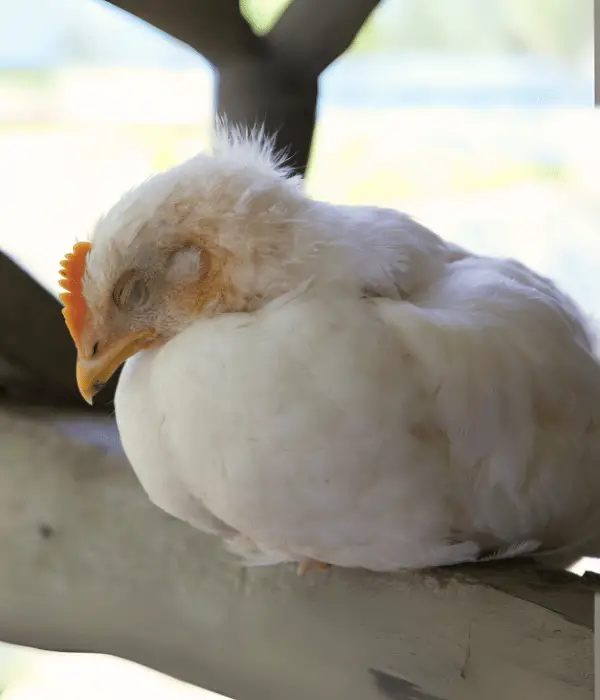
Chickens have a way of hiding illness until it’s bad. Beginners often skip routine health checks and then are shocked when a chicken collapses or has to be culled.
It is advisable to make it a habit to observe your flock daily. Look for subtle changes: a hen that suddenly stops eating, acts weak, or holds her eyes closed may be sick.
Dropping production, runny vents, sneezing, or mites on legs and feathers are other warning signs.
Here’s what to do:
- Daily roll call. Each evening, count your chickens as you put them up and note any that are missing or acting off. A quick glance can catch a hen that’s drooping, separate from the flock, or breathing oddly.
- Weekly hands-on exam. Once a week, gently pick up a random bird (this also builds trust). Check her: Are her eyes clear? Is her comb bright (not pale or blackened)? Look under wings and around the vent for lice or mites. Feel her crop (it should feel neither empty nor rock-hard). Examine feet for cuts or bumblefoot. Note any discoloration of wattles or patches of bare skin.
- Isolate if needed. If a chicken appears to be sick, act quickly. Move her to a safe, clean “hospital” cage or small pen. Offer vitamins and warm fluids, and consult online or contact a veterinarian for further advice. Early treatment can save a life. In extreme cases (like severe pasty butt in chicks or frostbite in hens), delaying action can be fatal.
- Keep a simple first-aid kit. Have on hand poultry basics: electrolytes (for dehydration), wound spray or triple-antibiotic ointment, iodine for navel care in chicks, and, if necessary, a small amount of antibiotic powder (used sparingly and responsibly). Knowledge is your best tool, so read up on common ailments. Chickens can develop respiratory infections, coccidia, worms, and bumblefoot, but many issues can be addressed if caught early.
Even if you’ve done everything right, sickness can strike. The difference is, vigilant care means you catch it early, isolate the case, and treat it before the whole flock is exposed.
As one keeper noted, “Early intervention can sometimes be the difference between life and death for your birds”.
8. Ignoring the Pecking Order and Enrichment

“Pecking order” isn’t just a phrase – it’s a real social structure among chickens. If you suddenly see a hen chasing or pecking another away from the feeder, don’t panic: she’s just enforcing rank.
However, this can lead to problems. Dominant birds can keep timid ones from eating enough, leading to malnutrition or stress.
An experienced writer notes that lower-ranking hens may experience health issues simply because they’re bullied at the feeder.
To avoid pecking-related problems, manage flock dynamics and provide enrichment:
- Multiple feeders and waterers. Spread them out so no single dominant hen can block a shy one. If you have a long coop or run, place a waterer at each end. This simple trick alone solves a lot of grumbling.
- Scatter food occasionally. Pour scratch grains or healthy treats on the ground for all to forage together. This distracts aggressive hens, allowing everyone to eat at their leisure.
- Add hiding places and perches. Low wooden platforms, ramps, or even empty boxes in the run give lower hens places to escape the view of bullies. Extra roosting spots (see next mistake) also reduce crowding during sleep.
- Regular dust baths and toys. A bored chicken will peck more; give them something to do. A dust bath area (sunny, dry spot with sand or earth) lets them bathe and de-stress. Hang vegetables or cabbage heads for pecking, or toss leafy branches in the run for variety.
By consciously managing your flock’s social needs, you create a more peaceful environment. In practice, many keepers find that simply adding another feeder or rearranging the coop stops nearly all bullying.
Remember, a chicken that’s constantly chased won’t eat and lay eggs properly, so keeping the peace immediately improves productivity.
9. Expecting Too Much (Eggs and Behavior)

One of the gentlest lessons of chicken keeping is managing expectations. Beginners often assume their hens will lay lots of eggs and behave like perfect pets.
In reality, chickens live by their schedules. Several factors cause egg production to dip, including short winter days, slow molting hens, or simply aging.
Don’t be alarmed if you see fewer eggs for a month or two – this is normal for many breeds. A healthy flock may lay hundreds of eggs a year, but not every day.
Similarly, a docile hen might suddenly peck, or a shy hen might run away if frightened. Chickens are individual animals, not machines. Here’s how to cope:
- Do your homework on your breed. Some chickens (like leghorns or Rhode Island Reds) lay prolifically year-round, while others (like Orpingtons or Silkies) lay less but are more broody or pet-friendly. Match your expectations when selecting breeds. If quantity of eggs is your goal, stick with known layer breeds.
- Maintain good nutrition and light. After the winter solstice, provide at least 14–16 hours of light (a simple timer on a coop light works) to stimulate laying. Ensure calcium is abundant so hens can form shells easily.
- Handle gently and often. Spending time with your birds (picking them up gently, feeding by hand) will make them friendlier. Remember, chickens can get bored or startled, just like any other pet; be patient. A shy hen may become trusting with consistent, gentle care.
- Enjoy their quirks. Sometimes chickens will do odd things – one hen might love stepping on your feet for attention, another may refuse to use nest boxes. These are normal behaviors. Embrace their personalities and adjust: train hens to nest by showing them the boxes (many will lay eggs where they ate last, so keep nests clean!).
In short, give them credit for being chickens, not humans. If you’re disappointed by a slowdown in eggs, double-check feed and care, but don’t panic.
As one chicken keeper wisely noted, “every chicken keeper starts as a beginner, and it’s okay to make mistakes.” Learning to adapt is part of the journey.
10. Seasonal Neglect (Not Adapting to Weather)

Chickens don’t change care rules on their own when seasons shift – you have to. A coop setup that works in spring may fail in midwinter or midsummer.
In winter, be aware of the risks of cold stress and frostbite. A moist, poorly ventilated coop can freeze on hens, and waterers will ice up. To fix this, insulate or partly enclose the coop (while maintaining airflow), and use a heated waterer or change water frequently.
You can also bring waterers inside the coop overnight (if you have space) so hens have a warm drink. Spread bedding extra thick on the floor; it can provide insulation from the cold ground.
String up a safe, low-wattage heat lamp as a last resort (chickens will huddle under it, but they shouldn’t have to feel it is “on” to survive – if they look for heat, your coop isn’t warm enough on its own).
In summer, the issues are the opposite: heat and humidity. Black roofs and walls can heat up like an oven. Provide shade around the coop (such as trees or a shade cloth) and ensure cross-ventilation to allow heat to rise and escape.
Place shallow pans of cool (not freezing!) water for wallowing on hot days. Misting or a small solar fan can help if it’s hot.
And keep flies down – parasitic flies multiply in summer mud, so remove any puddles or trash that might attract them. Check feet for fly eggs (watch out for “flystrike” on shanks) and remove any wet or dirty bedding immediately in hot weather.
A seasonal checklist helps: in fall, clear out leaves and check the coop for drafts; in spring, refresh bedding and inspect for nesting dangers (snakes or wasps).
By planning each season, you can prevent your hens from shivering or panting in extreme temperatures. Remember, comfort year-round means better laying and happier birds.
11. Poor Nesting Box and Roost Design
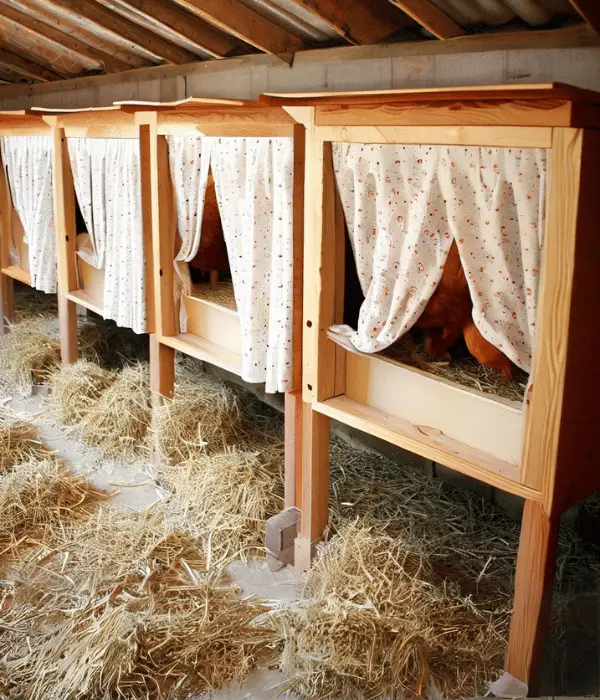
Even small design details inside the coop can make a big difference in hen comfort. A common mistake we often see is placing roosts in the wrong locations and not providing enough nesting boxes.
For roosts (perches where chickens sleep), use flat, sturdy boards rather than thin poles or dowels.
The photo below illustrates proper nesting boxes – and while it’s about nesting, the idea is similar for roosts: think comfort.
Chickens want to sit with their toes grasping under a flat edge. Many keepers learn that hens love 2×4 lumber set on its broad side for roosting.
Round rods or skinny perches force their toes to grip awkwardly and can cause foot problems (bumblefoot) over time. So:
- Install 2×4 roost bars (fastened securely, flat side up) about 2–4 feet off the floor. Make sure there are at least 6–8 inches of roost length per hen. Position the roost higher than the nest boxes so chickens naturally step down into nests.
- Ensure one nest box per 3–5 hens. If you have more hens than boxes, they’ll lay eggs on the floor or squabble over boxes. A good rule of thumb is 1 box for every 4 hens. Line boxes with clean straw and make them inviting (some people lightly cover the entrance or use a partial curtain to mimic privacy).
- Keep nests clean and quiet. A dirty or drafty nest box will deter hens. Change nesting material often. When introducing new hens to nest boxes, you can even put a golf ball or a previously laid egg in an empty box – hens naturally like to lay where eggs already are, and this “encourages them to use the box.”
By paying attention to these details, you’ll hear fewer “egg jokes” about chickens laying all over, and you’ll have fewer foot-health issues.
As one keeper learned, the right roost size helped eliminate frostbite and foot sores in her flock. With comfy perches and enough nests, your hens will sleep and lay with ease.
Conclusion
Raising backyard poultry is a learning process, and every keeper makes mistakes at first. The key is to learn from these experiences.
By avoiding the pitfalls above – overcrowding, poor coop design, dirty conditions, inadequate feed and water, lax security, skipping quarantines, ignoring health, neglecting behavior, holding unrealistic expectations, forgetting seasonal care, and skimping on coop interior setup – you set yourself and your flock up for success.
Remember, “avoiding these common pitfalls will… ensure the health and happiness of your chickens”. Take each tip to heart: give your chickens room to roam, a comfortable and secure home, good food and water, and regular care.
Soon you’ll be enjoying the rewards: a peaceful coop, lively, healthy birds, and plenty of fresh eggs – and you’ll feel proud knowing you did it the right way. Happy chicken keeping without any mistakes!
